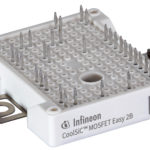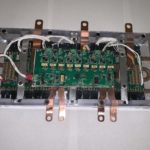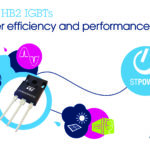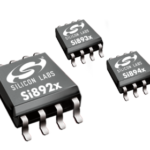by Rudye McGlothlin, Silicon Laboratories
Although solar cells were invented some 60 years ago, solar technology is just now becoming a mainstay energy source for utility operators as they move to offload fossil fuels and incorporate more renewable energy sources. Despite a slowdown in 2018 after a reduction in solar feed-in tariffs in several countries, including China and Germany, the solar market is on the rise again, with a strong growth trajectory ahead, especially as many governments look for ways to reduce greenhouse gas emissions to adhere to Paris climate goals.
According to Wood Mackenzie Power & Renewables’ new report, Global Solar PV Market Outlook Update: Q2 2019, annual installations are expected to rise to around 125 gigawatts per year by the early 2020s.The staggering cost reductions of solar technology is helping to fuel the market demand for solar projects from utility operators, commercial entities and residential homeowners who have all watched costs drop significantly in recent years. Since 2010, the cost of solar power has dropped a whopping 85 percent, and BloombergNEF forecasts an additional 63 percent reduction through 2050.
Solar inverter intelligence
Typically, when people envision solar deployments, photovoltaic (PV) panels are the first image that comes to mind. PV panels are the actual solar panels placed on the roofs of buildings and/or laid out across land parcels hosting large-scale solar projects. Yet what many people don’t realize is the PV panels are only half of the story. Solar inverters are required to transfer the power generated by the sun to the electric grid and make it accessible for use.
The solar inverter is a complex, high-performance processing unit that converts DC volts to AC volts, whereas the PV panel is a commodity product without much built-in intelligence. The PV panel is obviously critical, as its cells capture the energy directly from the sun. A supporting inverter is either integrated into each panel or placed on the panel mount to handle the power conversion. In addition to performing the essential DC to AC power conversion, the solar inverter also provides grid disconnect capabilities to prevent the PV system from powering a disconnected utility. An inverter remaining on-line during grid disconnect or delivering power through an unreliable connection can cause the PV system to back-feed local utility transformers, creating thousands of volts at the utility pole and endangering both the system and utility workers.
Encased in a sturdy package, the solar inverter is a rugged piece of technology designed to remain in full-power operation for more than 25 years. Due to its inherent value to the solar system, solar inverters are typically 10x the cost of a PV panel.
As solar technology advancements continue, inverters in recent years now have the ability to monitor and react to changes taking places across the PV panels. For example, if a cloud is passing overhead, the inverter can optimize the power generation and pull power from other panels still receiving maximum sunlight.
Microinverters, consisting of a small inverter located at the panel, are the most common way to conduct this important power conversion function, but they are not the only option. Depending on the deployment size, string inverters are sometimes used, enabling a single inverter to support numerous panels versus one inverter per panel. Solar optimizers are another potentially cost-effective option, but they do not handle the DC to AC power conversion locally. Instead, they condition the DC power and use a central inverter to complete the conversion process to AC.
Isolating the power
A key component within the solar inverter is the digital isolator integrated circuit (IC), which performs the critical functions of providing safety from high voltages to protect people and other circuit elements while allowing critical electrical signals to be transmitted within the system. The isolator ICs help control the power conversion, drive the power transistors, and manage the feedback loop for sensing currents and voltages, all of which enable tighter and more efficient control of the system.
Over the past few years, new materials have been identified for power transistors. The new materials for power transistors are already impacting the solar market. Wide bandgap materials for ICs, such as gallium nitride (GaN) and silicon carbide (SiC), are increasingly replacing traditional silicon-based field-effect transistors (FETs) because they are able to switch more current at a faster rate and run cooler. Traditional FETs tend to run hot and have limitations on how much current can run across the material. The GaN and SiC transistors can switch much faster and run cooler than silicon-based transistors, creating a more efficient, compact, and reliable system that drives down the cost of ownership. Silicon Labs, and several other IC suppliers in the industry, has designed isolated gate driver ICs for switching wide-bandgap FETs at high frequencies, and we are seeing an uptick of solar inverter companies adopting the new material, ultimately helping to improve the safety and reliability of solar systems and increase the power conversion speed.
Like any other emerging technology, solar systems will continue to evolve to meet rising energy market demands for higher capacity, lower costs and higher reliability. Although it’s taken solar technology decades to connect to the grid and become a core component of the energy matrix, its future looks especially bright as IC innovation helps solar deployments capture and convert sun power more efficiently, reliably and safely.






I see this as a key ingredient in the evolution of grid-to-photovoltaic stability. I am wondering if your engineers are also looking at the same isolation concept on the battery storage side?
Parallel issues could be solved by them in charge cycle control where the usual requirement is that the parallel connected batteries ‘must’ be identical to reduce the risk of overcharging the lower-resistance units or pairs.
Deploying such control filters at the battery connection will also avoid the eventual H2O electrolysis that results in gaseous boil and eventual explosion of the battery (a nasty event, if you’ve not experienced it first hand like I have).